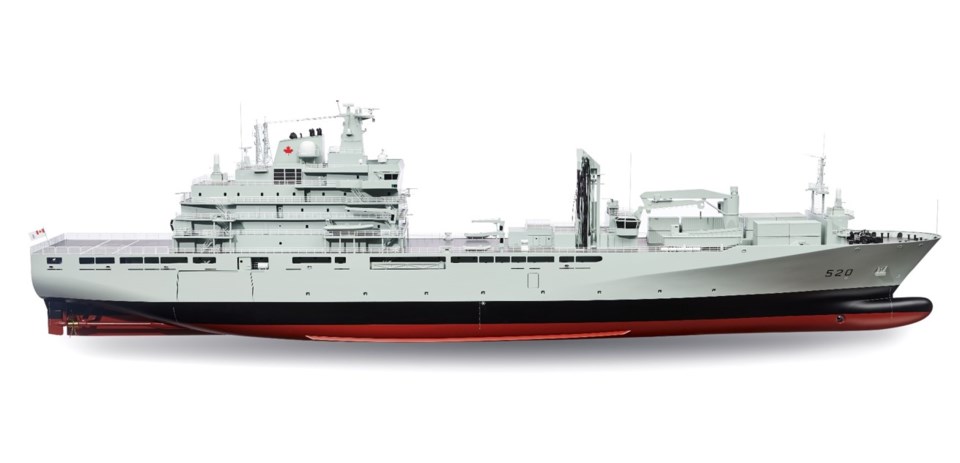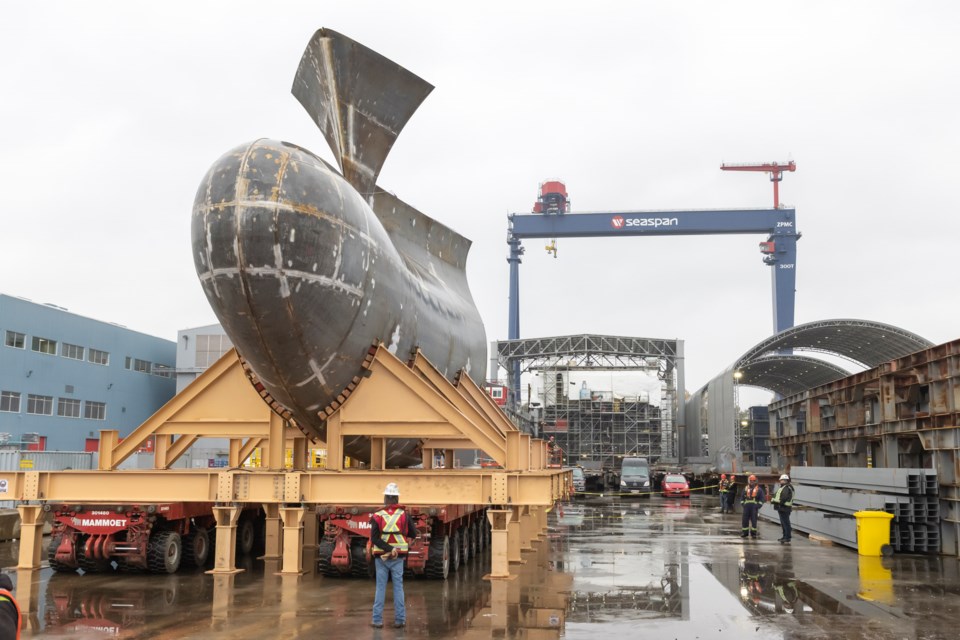The part of the ship that hits the water first when Canada’s new joint support ship heads out on a mission was delivered to North Vancouver’s Seaspan Shipyard Thursday after a six-hour night-time barge journey by barge.
The massive bow that will form the very front of the first navy joint support ship now under construction at Seaspan arrived at the shipyard around 7:30 a.m. Thursday morning.
The bow, fabricated at Ideal Welders on Annacis Island from steel cut on Seaspan’s precision laser cutter and bent into shape with a 1,000-tonne press, is one of the more geometrically-complex pieces of the hull.
The bulbous shape – which sits at the waterline – doesn’t look much like the “pointy end” of a ship at first. The shape is designed to break the water profile on either side of the ship’s hull to reduce drag and improve fuel efficiency.
Many large ships, like tankers, use a bulbous bow for the same reasons.
The bow will now be blasted with steel shot to ready it for painting, and painted before being joined with other massive blocks that will form the hull of the joint support ship – likely in about two months’ time.
While the bow could have been constructed at Seaspan, part of the aim of the federal shipbuilding program is to develop a marine supply chain. Part of Seaspan’s contractual arrangement with the federal government includes helping other companies develop their skills and expertise in that area, said Gerald Esau, director of production at Seaspan.
Having Ideal build the bow also allowed Seaspan to focus on its current production schedule, building the rest of the hull.
Between 30 and 40 tradespeople at Ideal Welders worked on the bow between March and October.
“It’s the first time (a similar bow) has been constructed in western Canada in 20 or 30 years,” said Josh Taylor, project manager for Ideal. “We’re proud to be a part of it.”

Quality control teams from both Seaspan and the Department of Defence made frequent inspections while the bow was under construction.
Seaspan Shipyards is currently working on a multibillion-dollar project to build two massive joint support ships for the Royal Canadian Navy.
The contract includes $2.4 billion to build the two Protecteur-class support ships – a figure that rises to $3.1 billion when manufacturing of additional spare components for both the joint support ship and other navy vessels is factored in.
The first ship is set to be delivered in 2023 and the second ship is expected to be finished in 2025.



